A middle class German woman’s Goller, from the early 16th century.
I made this Goller as part of my new middle class German wardrobe, inspired by my trip to Europe in 1996. Although I had previously made a high status fur-lined Goller, I needed something in a practical wool for everyday wear.
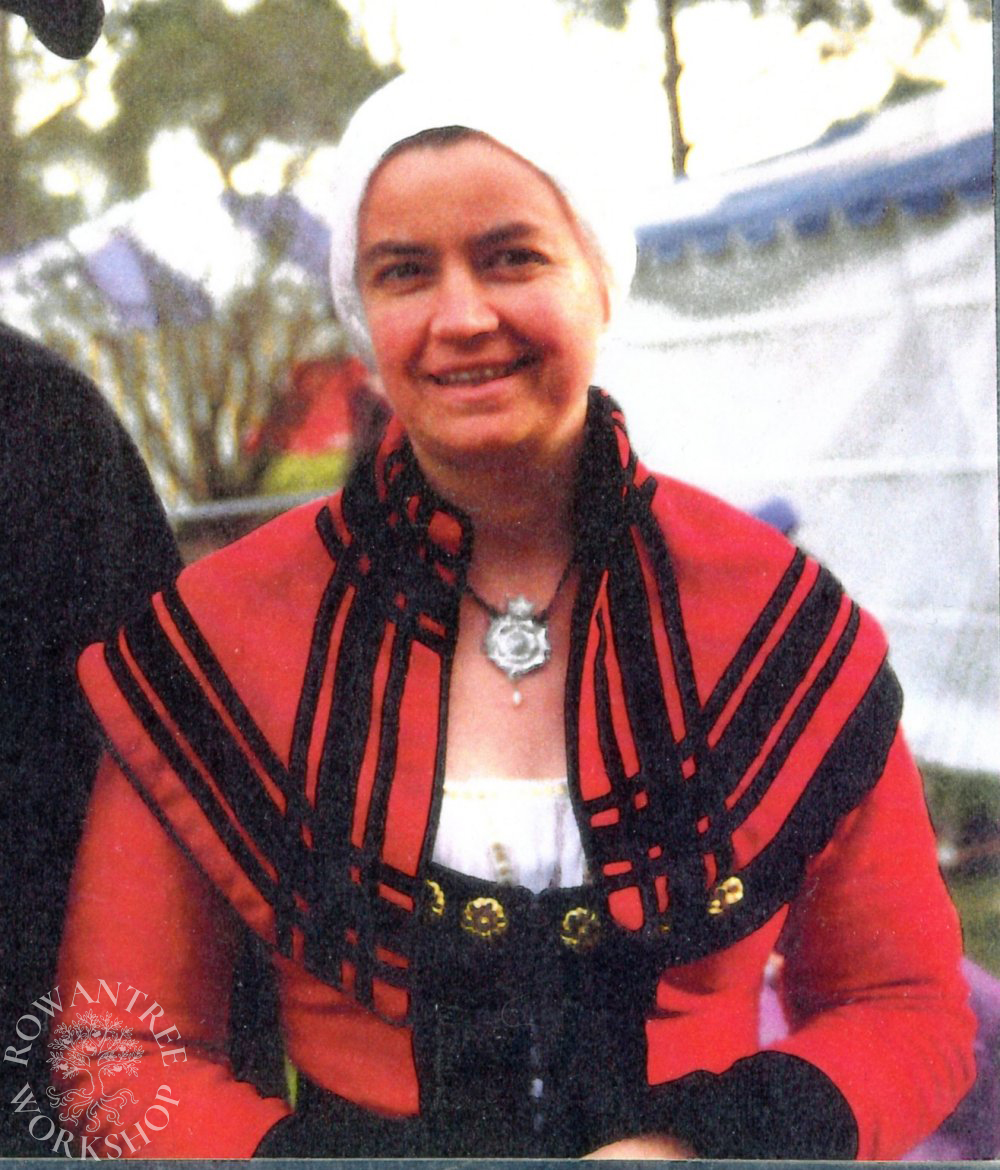
The Goller covers the chest and shoulders and is used to provide modesty, warmth and/or as a fashion statement. The various forms of Goller were an essential part of a woman’s wardrobe in early 16th century Germany. Versions were worn by woman of all classes, with materials appropriate to status and use.
Research & Design
Textiler Haurat (Zander-Seidel 1990) notes that while historical terms for different types of Goller do exist, there is no clear identification as to which name goes with which type!
This capelet style was probably termed a ‘Kragengoller’ (collar goller) and was fashionable in first third of the 16th century for women of all classes. The fabrics, linings and trim varied by class and were subject to sumptuary laws.
These images show middle class women in collar-style Gollers of plain fabric, with contrasting bands or guards along the edge – a common form of decoration. I particularly liked the interlaced versions depicted on the images by Urs Graf and Lucac Cranach.
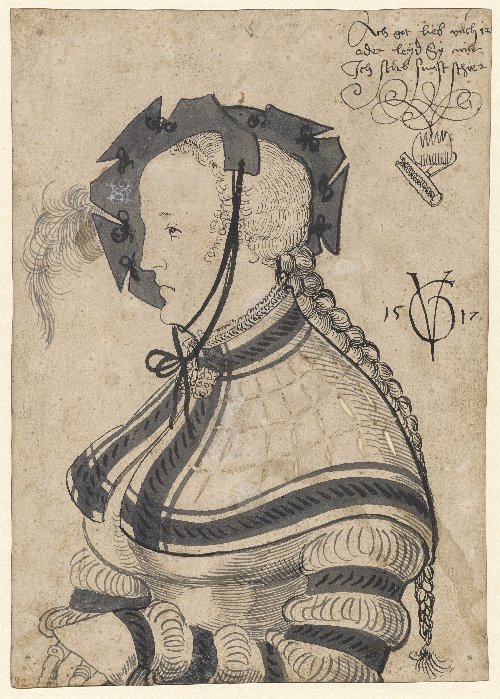
Source: Kunstmuseum Basel
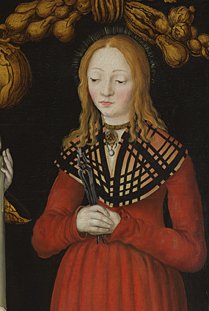
Source: The National Gallery
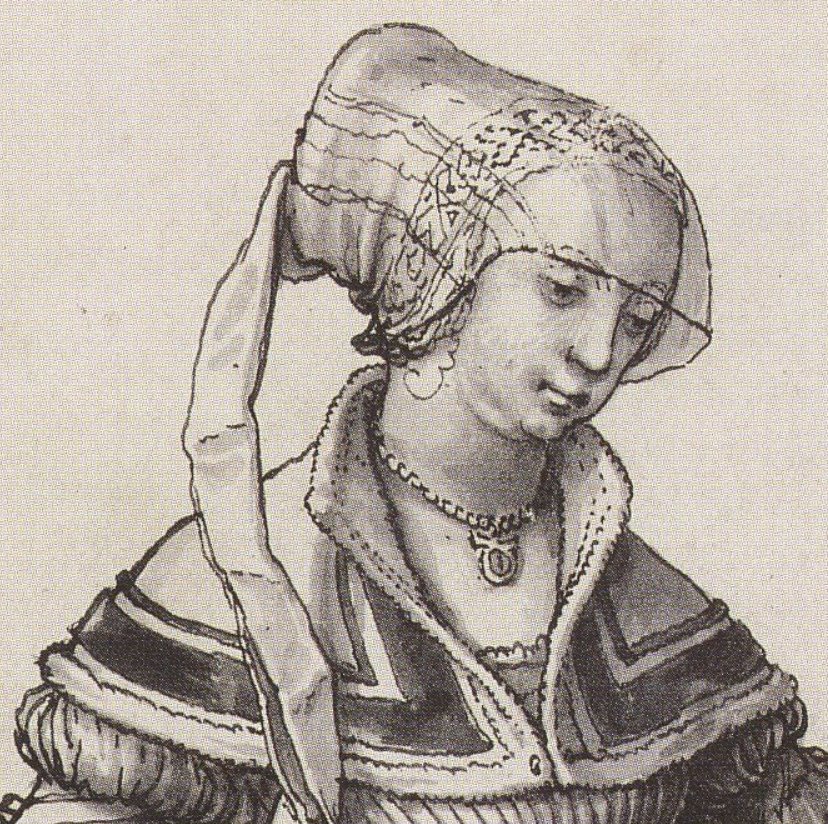
To contrast with my new green linen Rock, I chose a fine red well-fulled wool for the Goller, decorated with black velvet ribbon in two widths. For extra warmth, I decided to line it a similar weight black wool.
Construction
I had already developed a Goller pattern to go with my black velvet Cranach gown, so I used that as the basis. However, the Goller in the Cranach painting looked much higher on the sleeves, so I adjusted the pattern to make it smaller.
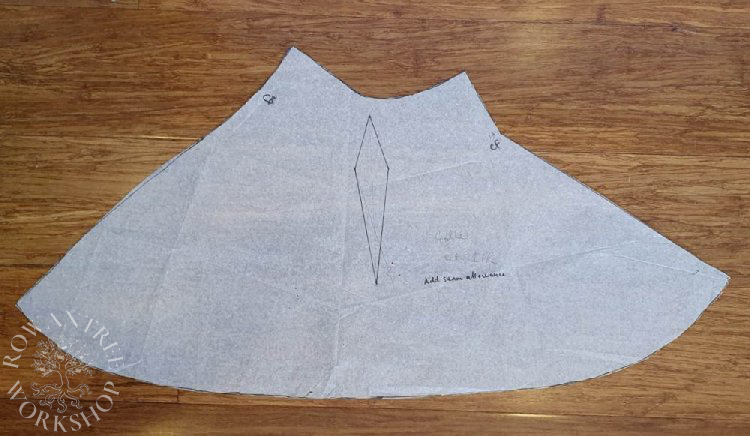
I cut the red and black wool and assembled each Goller complete, pressing well. I pinned on the velvet ribbon, echoing the shape of the Goller, then sewed this on by hand, interlacing the ends. Because the ribbon has no ease, I had to gather the inner edge of the ribbon to get the curve.
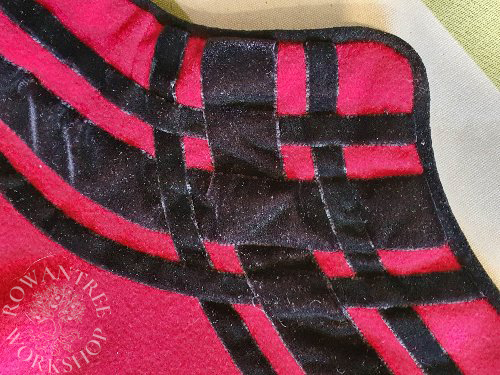
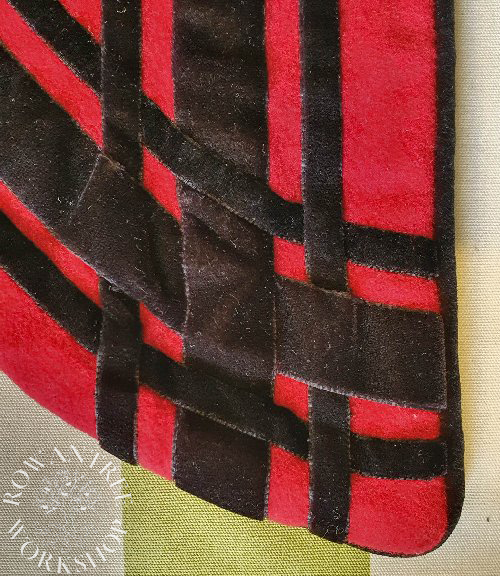
To trim the edge and give a nice finish, I made up some piping in black wool and sewed this to the red wool before bag-lining with the black wool.
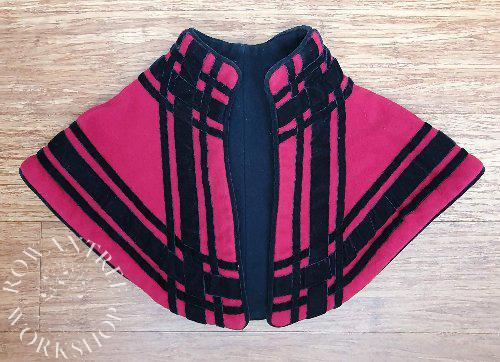
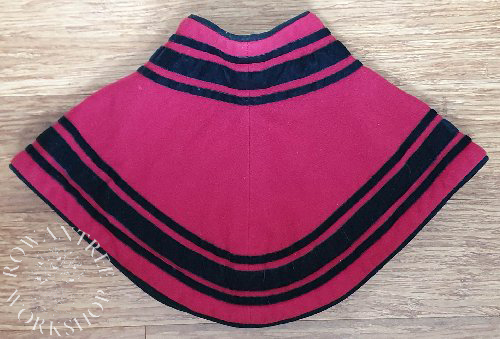
I was pleased with the look – and especially the trim, but I had made it a bit small. Not only had I made the pattern smaller, I had forgotten how much the ‘turn of cloth’ would take up with two layers of solide wool! It did not quite close at the front, which meant I could not add hooks and eyes to keep it closed, as planned.
Afterthoughts
Once I made my vest-style Goller, I rarely wore this one. It was too small and could not be closed at the front (especially once I put on weight), so it was decorative rather than functional. Getting it out again to write it up, I realised how much I like the look – I really should make a replacement. This time, a bit larger!

